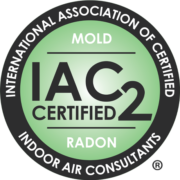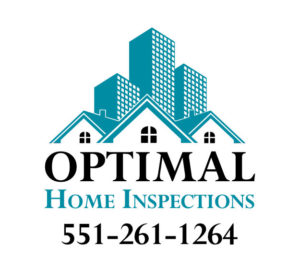1.0 Scope
1.1 The purpose of this standard is to provide standardized procedures to be used for a mold inspection. There are two types of mold inspections described in the IAC2 Mold Inspection Standards of Practice:
- Complete Mold Inspection (Section 2.0)
- Limited Mold Inspection (Section 3.0)
1.2 Unless the inspector and client agree to a limitation of the inspection, the inspection will be performed at the primary building and attached parking structure. Detached structures shall be inspected separately.
1.3 A mold inspection is valid for the date of the inspection and cannot predict future mold growth. Because conditions conducive to mold growth in a building can vary greatly over time, the results of a mold inspection (examination and sampling) can only be relied upon for the point in time at which the inspection was conducted.
1.4 A mold inspection is not a home (property) inspection.
1.5 A mold inspection is not a comprehensive indoor air quality inspection.
1.6 A mold inspection is not intended to eliminate the uncertainty or the risk of the presence of mold or the adverse effects mold may cause to a building or its occupants.
1.7 The scope of work may be modified by the Client and Inspector before and during the inspection process.
2.0 Complete Mold Inspection
2.1 The inspector shall perform:
- a non-invasive visual examination of the readily accessible, visible, and installed systems and components of the building (listed in Section 4.0 Standards of Practice)
- moisture, temperature and humidity measurements (refer to Section 4.8 Moisture, Humidity, and Temperature)
- mold samples according to the IAC2 Mold Sampling Procedures (refer to Section 5.0 IAC2 Mold Sampling Procedures)
2.2 The inspector shall report:
- moisture intrusion;
- water damage;
- musty odors;
- apparent mold growth;
- conditions conducive to mold growth;
- results of a laboratory analysis of all mold samplings taken at the building; and
- any system or component listed in Section 4.0 Standards of Practice that were not inspected and the reason(s) they were not inspected.
3.0 Limited Mold Inspection
The limited mold inspection does not include a visual examination of the entire building, but is limited to a specific area of the building identified and described by the inspector. As a result, moisture intrusion, water damage, musty odors, apparent mold growth, or conditions conducive to mold growth in other areas of the building may not be inspected.
3.1 The inspector shall describe:
- the room or limited area of the building in which the Limited Mold Inspection is performed
3.2 The inspector shall perform:
- a limited non-invasive visual examination of the readily accessible, visible, and installed systems and components located only in the room or limited area (as described in previous Section 3.1).
- mold samples according to the IAC2 Mold Sampling Procedures (see Section 5.0 IAC2 Mold Sampling Procedures)
3.3 The inspector shall report:
- moisture intrusion,
- water damage,
- musty odors,
- apparent mold growth, or
- conditions conducive to mold growth; and
- results of a laboratory analysis of all mold samplings taken at the building
4.0 Standards of Practice
4.1 Roof
I. The inspector shall inspect from ground level or eaves:
- The roof covering.
- The roof drainage system, including gutters and downspouts.
- The vents, flashings, skylights, chimneys, and any other roof penetrations.
II. The inspector is not required to:
- Walk on any roof surface.
- Predict the service life expectancy.
- Perform a water test.
4.2 Exterior and Grounds
I. The inspector shall inspect from the ground level:
- The cladding, flashing and trim.
- Exterior doors, windows, decks, stoops, steps, stairs, porches, railings, eaves, soffits and fascias.
- The exterior grading surrounding the building perimeter.
- Items that penetrate the exterior siding or covering materials.
II. The inspector is not required to:
- Inspect underground drainage systems.
- Window well drainage
- Inspect defects not related to mold growth or moisture intrusion.
4.3 Basement, Foundation, Crawlspace, and Structure
I. The inspector shall inspect:
- The foundation, basement, or crawlspace including ventilation.
- For moisture intrusion
II. The inspector is not required to:
- Operate sump pumps with inaccessible floats.
- Inspect for structural defects not related to mold growth or moisture intrusion.
4.4 Heating, Cooling and Ventilation
I. The inspector shall inspect:
- The air handler, circulating fan, and air filter.
- The condensate pump.
- Readily visible ductwork.
- Representative number of supply and return air registers.
- The central humidifier.
- The central air conditioning unit.
II. The inspector is not required to:
- Inspect the air conditioning coil if not readily accessible.
- Inspect the condensate pan if not readily accessible.
- Test the performance or efficiency of the HVAC system.
- Inspect the interior of ductwork system.
4.5 Plumbing
I. The inspector shall inspect:
- The readily visible main water line.
- The readily visible water supply lines.
- The readily visible drain, waste, and vent pipes.
- Hot water source.
- Fixtures such as toilets, faucets, showers and tubs.
II. The inspector is not required to:
- Test the showers and tubs by filling them with water
- Test whirlpool tubs, saunas, steam rooms, or hot tubs.
- Inspect for plumbing defects that are not related to mold growth or moisture intrusion.
4.6 Attic, Ventilation & Insulation
I. The inspector shall inspect:
- Insulation.
- Ventilation of attic spaces.
- Framing and sheathing.
II. The inspector is not required to:
- To move, touch, or disturb insulation.
- Inspect for vapor retarders.
- Break or otherwise damage the surface finish or weather seal on or around access panels and covers.
4.7 Interior
I. The inspector shall inspect:
- The walls, ceilings, floors, doors and windows.
- The ventilation in the kitchen, bathrooms and laundry.
- Whole-house ventilation fans
II. The inspector is not required to:
- Inspect for interior defects that are not related to mold growth or moisture intrusion.
4.8 Moisture, Humidity, and Temperature
I. The inspector shall measure:
- Moisture of any room or area of the building that has moisture intrusion, water damage, moldy odors, apparent mold growth, or conditions conducive to mold growth.
- Humidity of any room or area of the building (at the inspector’s discretion).
- Temperature of any room or area of the building (at the inspector’s discretion).



